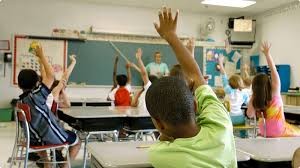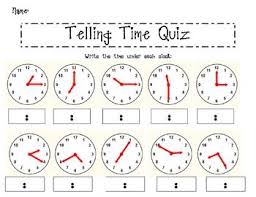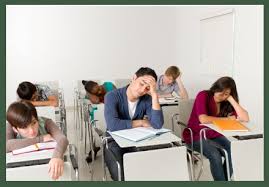
 I recently was faced with the challenge of teaching a classroom of second graders how to measure time. They were at a level in their learning where they were expected to know how to tell time by reading a clock, but now they were moving on to learn how to measure the passage of time. I knew this would be a challenge because it is such an abstract concept. They would have to know 1:15 to 1:45 equals a half hour or thirty minutes, but so does 1:00 to 1:30. I was also expected to teach them fifteen minute and forty-five minute intervals!
I recently was faced with the challenge of teaching a classroom of second graders how to measure time. They were at a level in their learning where they were expected to know how to tell time by reading a clock, but now they were moving on to learn how to measure the passage of time. I knew this would be a challenge because it is such an abstract concept. They would have to know 1:15 to 1:45 equals a half hour or thirty minutes, but so does 1:00 to 1:30. I was also expected to teach them fifteen minute and forty-five minute intervals!
Introducing Passage of Time
In their math journals, they had a copy of a school schedule. I asked them questions such as, “How much time do the students have at recess?” “How long is math?” “How much time are the students in school for the day?”
The kids were blurting out answers such as, “12:00!” and “1:30!” It was clear that this was a new concept for all of them.
I had them close their books for my Plan B: Theatre to the rescue!
All Kids Love an Audience
 I ended up writing down a bunch of times from 6:30 in the morning to 6:30 at night at fifteen-minute intervals. I asked for five volunteers from the class and each one held up a timesheet in front of the class. I called on one more volunteer to be the actor.
I ended up writing down a bunch of times from 6:30 in the morning to 6:30 at night at fifteen-minute intervals. I asked for five volunteers from the class and each one held up a timesheet in front of the class. I called on one more volunteer to be the actor.
The key in this exercise is to not call up too many volunteers at once so there is enough of an audience. You want to create a feeling of performance and, at the same time, keep everyone involved. On the fly, I improvised a story about a kid’s day.
An Engaging and Active Story
“Once upon a time, there was a girl named Jan, and she decided she was going to have the best day ever! She woke up at 6:30AM. She got dressed, brushed her hair, ate a healthy breakfast, brushed her teeth, helped her mother pack her lunch, and was ready to go on time. While she was waiting for her mom, she helped clean up the kitchen and read her book. At 7:30 AM, she got in the car and her mom drove her to school. They arrived at school at 7:45 AM. She walked up to her classroom and took a few minutes to play with her friend Bob. They saw a cute mongoose and tried to pet it, but it kept running away. She got to her classroom on time at 8:00 AM.”
Any story works as long as it is fun and active. Whenever I said a time, the student with that time would hold their sheet high in the air. I asked the class questions such as, “How long did it take Jan to get ready for school if she woke up at 6:30AM and was ready to go by 7:30?”
All the kids from 6:30 to 7:30 would hold up their time sheets, including those with 15-minute and 30-minute intervals. That way they could visualize that one-hour is made up of four intervals with each being 15 minutes. I emphasized that the jump from 6:30 to 7:30 equals one hour, and also that each part equaled fifteen minutes (and that two jumps from 6:30 to 7:00 equals one-half hour or thirty minutes).
Then I asked, “How long was Jan’s trip to school if they left her house at 7:30 and she arrived at school at 7:45?” The students with those two times held them up. The intervals, especially fifteen minutes and forty-five minutes, were more challenging for some to grasp. I encouraged counting by fives, with which some still struggled, but repetition is key when teaching such an abstract concept.
Lessons Learned and Part 2
 It is important to remember that you want to keep this exercise active and fun. With the help of the actors, I did not lose the “audience’s” attention because all of the students were so engaged! This exercise helped to hone student listening, math, and communication skills. It allowed them to link an abstract concept, such as the passage of time, to real life events, making it a part of their own lives. Finally, it started them down the road to learning the basics they would need in order to understand time management, which is an essential skill that everyone needs.
It is important to remember that you want to keep this exercise active and fun. With the help of the actors, I did not lose the “audience’s” attention because all of the students were so engaged! This exercise helped to hone student listening, math, and communication skills. It allowed them to link an abstract concept, such as the passage of time, to real life events, making it a part of their own lives. Finally, it started them down the road to learning the basics they would need in order to understand time management, which is an essential skill that everyone needs.
In Part 2 of this two-part series, I’m going to look at another challenging teaching moment when I was called upon to teach measurement concepts and units to fourth graders. Once again, I used theatre in combination with math.

 Random Item
Random Item